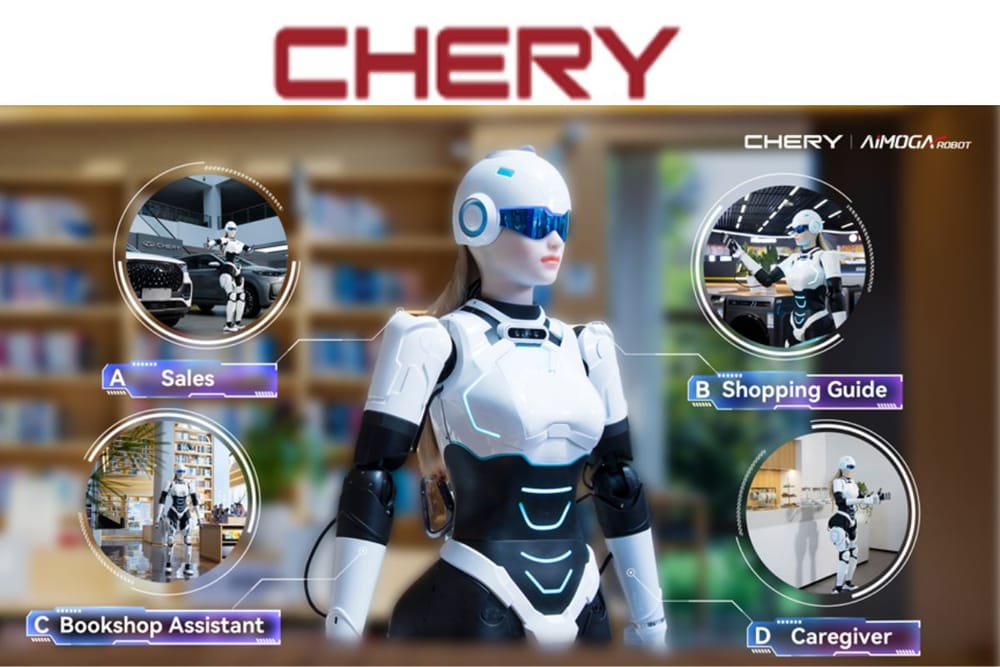- Chery and Aimoga have joined forces to create a bipedal robot with Embodied AI named Mornine, which is set to make its debut at the upcoming CEO-themed conference.
- The distinctions in positioning between bipedal robots and other robot types predominantly manifest in their application scenarios, functional requisites, and market anticipations.
- Chery and Aimoga's collaborative endeavor in developing the bipedal robot with Embodied AI, Mornine, will usher in a wholly innovative customer ecosystem service system.
Boston Dynamics is retiring Atlas, the most famous iconic bipedal robot in existence. This news has sparked considerable interest within both the tech industry and the general public, raising questions about the future trajectory of robotics technology and potential development directions. As a trailblazer in humanoid robotics, Atlas has achieved global recognition for its remarkable mobility and impressive dynamic balance capabilities, setting numerous milestones along the way. The retirement of Atlas serves as a microcosm, reflecting the broader development trajectory of the robotics field. It underscores the rapid evolution and continuous iteration of robotics technology, showcasing the dynamic nature of advancements within the industry. These advancements are not limited to bipedal robots but span across various robot types, propelling the field toward an expansive and dynamic future. Meanwhile, the bipedal robot with Embodied AI Mornine, a product of the collaborative efforts between Chery and Aimoga, is poised to make its debut at the upcoming CEO-themed conference.
Mornine is driven by electric motors and runs on battery power, departing from Atlas's hydraulic system. While it may not match Atlas's explosive power and performance on tough terrain, Mornine excels in scalability and cost-effectiveness, making it ideal for large-scale production and commercialization. Mornine features a highly biomimetic design, with its face crafted from human-like silicone biomimetic material. This material is engineered to deliver lifelike visual effects and tactile sensations. Moreover, Mornine can simulate human oral and facial muscle movements, articulating expressions like speaking, smiling, and opening its mouth convincingly.
Mornine is equipped with a Large Language Model (LLM) that, when integrated with robotics technology, allows it to harness the model's capabilities in understanding and generating language. This capability enables Mornine to accurately interpret verbal or written commands from humans and translate them into specific action strategies. Moreover, Mornine incorporates Chery's extensive automotive brand knowledge, covering all models and industry insights, to develop an industry-level large-scale model. Leveraging this knowledge base, Mornine can engage in casual conversations with users and provide detailed answers to professional questions in the automotive domain.
Mornine's versatility spans across a wide spectrum of application scenarios, poised to pioneer a brand-new customer ecosystem service system. It represents a paradigm shift in humanoid robotics, offering a range of applications and poised to establish an innovative customer ecosystem service system. Its evolution unfolds through three transformative stages, each introducing groundbreaking features and expanding application horizons in response to technological advancements and evolving societal demands.
During the initial stage, Mornine serves as a proficient information provider and product advisor. For instance, within settings like automotive sales centers or showrooms, Mornine leverages its extensive knowledge base to deliver precise responses to customer inquiries and provide detailed product insights and recommendations via voice or screen interfaces. This enhances service efficiency and significantly elevates customer satisfaction levels.
Advancing into the second stage, Mornine integrates advanced capabilities such as visual recognition and autonomous navigation. It can autonomously navigate and guide customers to specific product locations, utilizing its dexterous robotic arms for physical demonstrations and operations, and even assisting customers with product handling tasks. These enhancements facilitate more lifelike human interactions, thereby enriching the overall user experience.
In its third and final developmental stage, Mornine evolves into a comprehensive home assistant, offering a myriad of services in home care scenarios. It adeptly handles routine inquiries, provides timely life reminders, assists in health management, supports eldercare and children's education, and undertakes household chores such as cleaning and cooking. At this pinnacle stage, Mornine assumes a role akin to that of a nurturing family member, deeply embedded in people's lives, thus significantly enhancing quality of life and alleviating burdens on households.
Within the robotics industry, robots are typically classified into two primary categories: those emphasizing high levels of biomimicry with human-like expressions and arm movements but lacking walking abilities, and those prioritizing walking capabilities but often exhibiting lower levels of biomimicry. Mornine, born from the collaboration between Chery and Aimoga, stands out as a remarkable example of a highly biomimetic robot equipped with advanced walking capabilities. Presently, Mornine achieves a walking speed of up to 4 kilometers per hour. The unveiling of Mornine signifies not just the persistent exploration and triumph over challenges by the research and development team, but also a substantial leap in technological progress contributing to the enhancement of societal productivity and lifestyle improvements.









